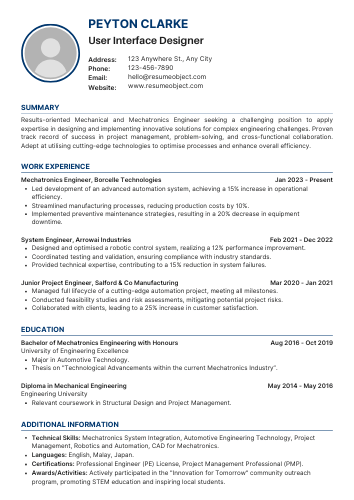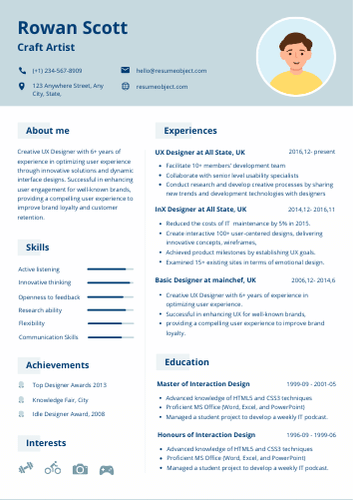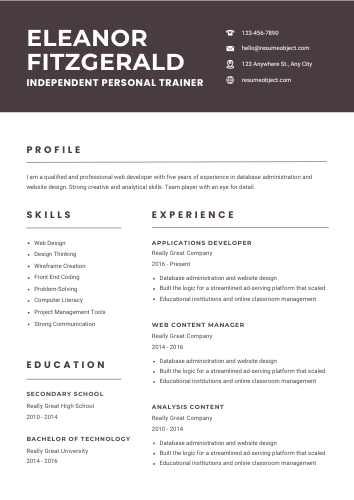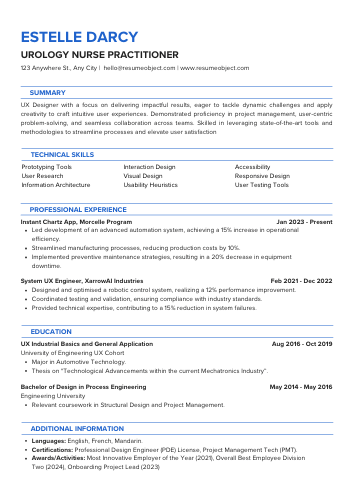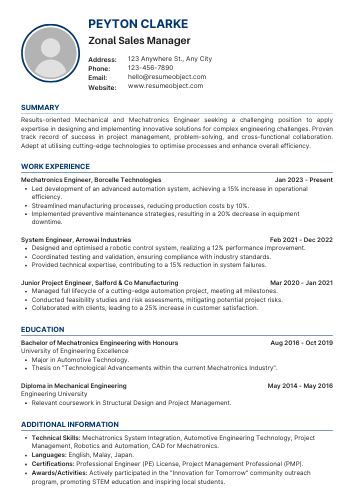Medical Records Job Description for Resume in 2025 – Key Duties, Action Verbs
Medical Records Job Description for Resume
In today’s healthcare landscape, a well-crafted resume is essential for landing a position in medical records management. Understanding the Medical Records Job Description for Resume is crucial for showcasing your skills and experiences effectively. This role involves maintaining patient records, ensuring accuracy, and safeguarding sensitive information, all while adhering to regulatory standards.
As a medical records professional, you play a vital role in the healthcare system, supporting both clinical staff and patients. Highlighting key duties and incorporating action verbs in your resume not only demonstrates your expertise but also captures the attention of potential employers. Let’s explore the essential components that make your resume stand out in this competitive field.
Medical Records Job Description for Resume
Medical records are comprehensive documents that contain a patient's health history, treatments, medications, and test results. Their primary purpose is to ensure continuity of care, allowing healthcare providers to make informed decisions based on accurate and up-to-date information. In the healthcare industry, medical records play a crucial role in patient safety, legal compliance, and effective communication among medical professionals.
Careers in medical records range from entry-level positions like medical coders to mid-level roles such as health information managers, and senior-level positions like chief information officers. Work environments vary from hospitals and clinics to insurance companies and government agencies. Professionals in this field must be detail-oriented and knowledgeable about healthcare regulations and technology to manage sensitive patient information effectively.
How a Medical Records Job Description Enhances Resume
A strong job description is crucial for a Medical Records resume as it serves as the foundation for showcasing your qualifications and experiences relevant to the position. Here’s why this section grabs recruiter attention:
-
Clarity and Relevance: A well-defined job description highlights your specific roles and responsibilities in medical records, making it easier for recruiters to see your fit for the role.
-
Keyword Matching for ATS: Many organizations use Applicant Tracking Systems (ATS) to filter resumes. Including relevant keywords from the job description in your Medical Records resume increases the chances of passing through these systems.
-
Demonstrating Achievements: A strong job description allows you to showcase achievements, such as improving record accuracy or reducing retrieval times, which enhances your profile.
-
Measurable Impact: By quantifying your contributions (e.g., “Managed a database of over 10,000 patient records”), your Medical Records resume stands out, providing concrete evidence of your capabilities.
-
Engaging Recruiters: A compelling job description captures attention, making recruiters more likely to remember your Medical Records resume amidst a sea of applications.
Incorporating these elements not only elevates your Medical Records resume but also significantly boosts your chances of landing an interview.
To see a complete guide on strengthening your resume, read our article on Service Advisor Job Description for Resume.
Medical Records Job Description Examples
Entry Level Resume Job Description Examples
Medical Records Clerk: Responsible for organizing and maintaining patient records, ensuring accuracy and confidentiality. Duties include data entry, filing documents, and assisting healthcare staff with retrieving information.
Health Information Technician: Entry-level position focused on managing patient data and medical records. Responsibilities include coding diagnoses and procedures, ensuring compliance with regulations, and maintaining electronic health record systems.
Medical Office Assistant: Support the administrative functions of a healthcare facility by managing patient files, scheduling appointments, and processing insurance claims. Requires attention to detail and strong organizational skills.
Patient Registration Specialist: First point of contact for patients, responsible for collecting personal and insurance information, entering data into the system, and ensuring that medical records are complete and up to date.
Data Entry Clerk - Medical Records: Tasked with inputting patient information into electronic databases, verifying data accuracy, and assisting in the maintenance of medical records. Requires proficiency in data entry and familiarity with medical terminology.
Mid-Level Resume Job Description Examples
-
Medical Records Technician: Responsible for managing and organizing patient medical records, ensuring accuracy and compliance with regulations. Collaborate with healthcare professionals to maintain data integrity, perform audits, and assist in the implementation of electronic health record systems.
-
Health Information Specialist: Oversee the collection, analysis, and management of patient health information. Ensure the confidentiality and security of medical records while providing support for data entry, retrieval, and reporting. Work closely with clinical staff to improve documentation practices.
-
Clinical Data Coordinator: Manage and coordinate clinical data collection and entry processes. Ensure compliance with data management protocols and assist in the development of data reporting tools. Collaborate with research teams to support clinical trials and studies.
-
Health Information Manager: Supervise the health information department, ensuring efficient operations and adherence to legal standards. Lead initiatives to improve record-keeping processes, train staff on best practices, and implement new technologies to enhance data management.
-
Medical Coding Specialist: Analyze patient records and assign appropriate codes for diagnoses and procedures. Ensure accurate coding to facilitate billing and reimbursement processes. Stay updated on coding regulations and guidelines, providing training and support to other staff as needed.
Experienced Level Resume Job Description Examples
Medical Records Manager: Responsible for overseeing the management of patient records, ensuring compliance with healthcare regulations, and implementing efficient record-keeping systems. Collaborates with healthcare providers to maintain accurate and complete documentation, while training staff on best practices in medical record management.
Health Information Technician: Tasked with organizing and managing health information data, ensuring its quality, accuracy, and security. Works with electronic health record (EHR) systems to input patient information, conduct audits, and assist in the transition to digital records. Provides support to healthcare professionals regarding health information policies and procedures.
Clinical Documentation Specialist: Focuses on improving the quality of clinical documentation in patient records. Reviews medical records for completeness, accuracy, and compliance with coding guidelines, while collaborating with physicians to clarify documentation. Utilizes coding software to ensure proper coding and reimbursement for services rendered.
Health Information Manager: Responsible for the strategic management of health information systems and the integrity of patient records. Develops policies and procedures for data management, oversees the health information department, and ensures adherence to legal and ethical standards. Engages in data analysis to support clinical decision-making and improve patient care.
Medical Coding Specialist: Specializes in translating healthcare services into standardized codes for billing and insurance purposes. Reviews medical records to assign appropriate codes, ensuring compliance with coding regulations and accuracy for reimbursement. Works closely with healthcare providers to resolve discrepancies and improve documentation practices.
List of 15 Key Duties of a Medical Records
As a Medical Records professional, you play a crucial role in managing patient information and ensuring compliance with healthcare regulations. Here are 15 key duties to highlight on your resume:
- Maintain and organize patient records in accordance with legal and ethical standards.
- Ensure accuracy and completeness of medical documentation.
- Process and code medical diagnoses and procedures.
- Retrieve and distribute medical records as requested by authorized personnel.
- Assist in the implementation of electronic health record (EHR) systems.
- Conduct regular audits of medical records for quality assurance.
- Protect patient confidentiality and comply with HIPAA regulations.
- Train healthcare staff on proper documentation practices.
- Collaborate with healthcare providers to resolve discrepancies in patient records.
- Prepare reports and statistics related to patient care and outcomes.
- Manage release of information requests from patients and third parties.
- Maintain inventory of medical records and ensure secure storage.
- Support billing and coding processes by providing accurate documentation.
- Facilitate communication between departments regarding patient information.
- Stay updated on changes in healthcare regulations and record-keeping practices.
Key Responsibilities of a Medical Records
Medical Records professionals play a crucial role in managing patient information and ensuring compliance with regulations. Here are key job responsibilities to include on your resume:
-
Maintain Patient Records
Ensure accurate and up-to-date patient records by organizing, filing, and retrieving documents as needed for healthcare providers and administrative staff. -
Data Entry and Management
Input and update patient data in electronic health records (EHR) systems, ensuring accuracy and confidentiality while adhering to data protection regulations. -
Compliance with Regulations
Monitor and enforce compliance with healthcare regulations, such as HIPAA, to protect patient privacy and maintain the integrity of medical records. -
Record Retrieval
Facilitate timely retrieval of medical records for healthcare providers, insurance companies, and legal requests, ensuring that all information is accurate and complete. -
Quality Assurance
Conduct regular audits of medical records to verify accuracy, completeness, and compliance, implementing corrective actions as necessary to improve record-keeping practices. -
Patient Interaction
Assist patients in obtaining their medical records, addressing inquiries, and providing guidance on the process while maintaining a professional and empathetic demeanor. -
Collaboration with Healthcare Team
Work closely with physicians, nurses, and administrative staff to ensure seamless communication and accurate documentation of patient care and treatment plans.
Essential Skills to Highlight on Medical Records Resume
When crafting a resume for a position in medical records, it's important to highlight a combination of technical and interpersonal skills that demonstrate your expertise and suitability for the role. Below is a list of essential skills to consider including:
- Medical terminology
- Data entry
- HIPAA compliance
- Electronic health records (EHR) management
- Attention to detail
- Patient confidentiality
- Records auditing
- Documentation skills
- Time management
- Communication skills
- Problem-solving
- Microsoft Office proficiency
- Organization skills
- Team collaboration
- Analytical skills
- Knowledge of coding systems (ICD-10, CPT)
- Database management
- Customer service
- Adaptability
- Quality assurance
Other Resume Job Descriptions
How to Quantify Achievements in Medical Records Job Description
-
Use Specific Metrics: Quantify achievements by including numbers or percentages that demonstrate your impact. For example, “Managed patient records for over 5,000 patients, ensuring 98% accuracy in data entry.”
-
Highlight Efficiency Improvements: Showcase how your contributions improved processes. For instance, “Streamlined the medical records retrieval process, reducing average retrieval time from 30 minutes to 10 minutes, enhancing staff productivity.”
-
Emphasize Compliance and Standards: Mention adherence to regulations and standards. Example: “Achieved 100% compliance with HIPAA regulations during annual audits, ensuring patient confidentiality.”
-
Showcase Training and Development: Include any training initiatives you led. For example, “Trained 10 new staff members on electronic medical records systems, resulting in a 50% decrease in onboarding time.”
-
Quantify Cost Savings: If applicable, mention any cost-saving measures. For instance, “Implemented a new electronic filing system that reduced paper costs by 30% annually.”
By quantifying your achievements with specific examples, you can effectively communicate your value to potential employers in the medical records field.
Tips to Tailor Medical Records Job Description for ATS
-
Start with a clear job title that reflects the position, such as "Medical Records Specialist." Use keywords relevant to the role to ensure it aligns with common search terms in Medical Records Resume. This helps ATS recognize the job as a match for candidates.
-
In the responsibilities section, include specific tasks such as managing patient records, ensuring compliance with regulations, and maintaining confidentiality. Use action verbs and industry-specific terminology to enhance clarity and relevance. This will improve the chances of your job description being matched with qualified applicants.
-
Highlight necessary qualifications, such as a degree in health information management or relevant certifications. Mention required skills like attention to detail, organizational abilities, and familiarity with electronic health record systems. This specificity will help filter candidates effectively and ensure that the Medical Records Resume aligns with your expectations.
Action Verbs & Power Words for Medical Records Job Description
When crafting a compelling resume for a Medical Records position, using strong action verbs can significantly enhance your job descriptions. Here’s a list of powerful words that can effectively convey your skills and accomplishments:
- Analyzed
- Organized
- Maintained
- Coordinated
- Processed
- Documented
- Streamlined
- Implemented
- Monitored
- Resolved
- Collaborated
- Ensured
- Developed
- Audited
- Updated
Sample Resume with Medical Records Job Description
Following is the ATS-friendly sample resume of Medical Records with job description with all necessary resume sections. Now have a look at Medical Records Job Description for Resume.
John Smith
123 Health St.
Cityville, ST 12345
(555) 123-4567
[email protected]
Objective
Detail-oriented and organized Medical Records Technician with over 5 years of experience in managing patient records, ensuring accuracy, and maintaining confidentiality. Seeking to leverage expertise in medical coding and data management at Cityville Hospital.
Education
Associate of Applied Science in Health Information Technology
Cityville Community College, Cityville, ST
Graduated: May 2018
Certifications
- Registered Health Information Technician (RHIT)
- Certified Coding Specialist (CCS)
Experience
Medical Records Technician
Cityville Medical Center, Cityville, ST
June 2018 – Present
- Managed and maintained electronic and paper medical records for over 5,000 patients, ensuring compliance with HIPAA regulations.
- Collaborated with healthcare providers to ensure accurate and timely coding of diagnoses and procedures, improving billing accuracy by 20%.
- Conducted regular audits of medical records to identify discrepancies and implement corrective actions.
- Trained new staff on medical record management systems and best practices in data entry.
Health Information Clerk
HealthFirst Clinic, Cityville, ST
January 2016 – May 2018
- Assisted in the organization and retrieval of patient records, improving efficiency in patient care delivery.
- Processed patient admissions and discharges, ensuring accurate data entry into the electronic health record system.
- Supported the coding department by verifying patient information and resolving discrepancies.
Skills
- Proficient in electronic health record (EHR) systems (Epic, Cerner)
- Strong knowledge of medical terminology and coding (ICD-10, CPT)
- Excellent attention to detail and organizational skills
- Strong communication and interpersonal skills
- Ability to maintain confidentiality and handle sensitive information
Professional Affiliations
- American Health Information Management Association (AHIMA)
- National Association of Health Data Organizations (NAHDO)
References
Available upon request.
Common Mistakes to Avoid When Adding Medical Records Job Description
When crafting a Medical Records Job Description for Resume, it's crucial to avoid common pitfalls that could undermine your application. A well-written job description not only showcases your qualifications but also aligns them with the expectations of potential employers. Here are some mistakes to steer clear of to ensure your resume stands out in a competitive field.
- Vagueness: Failing to provide specific details about your responsibilities can leave employers unsure of your capabilities.
- Ignoring Keywords: Not incorporating relevant industry keywords may lead to your resume being overlooked by Applicant Tracking Systems (ATS).
- Overloading with Jargon: Using excessive medical terminology without context can confuse hiring managers who may not be familiar with all terms.
- Neglecting Achievements: Focusing only on duties rather than showcasing your accomplishments can diminish the impact of your experience.
- Lack of Tailoring: Submitting a generic job description without customizing it for the specific role can signal a lack of genuine interest in the position.
By avoiding these mistakes, you can enhance your Medical Records Job Description for Resume and improve your chances of landing an interview.
Do & Don't Do in Resume for Medical Records Job Description
When crafting a Medical Records job description for a Medical Records Resume, focus on key responsibilities such as maintaining patient confidentiality, organizing and managing health information, and ensuring accuracy in medical documentation. Highlight the importance of familiarity with electronic health record systems and compliance with healthcare regulations to showcase the candidate's technical skills.
Additionally, emphasize the need for strong attention to detail and effective communication skills, as these are crucial for collaborating with healthcare professionals. Mention the ability to handle sensitive information with discretion, which enhances the candidate's appeal to potential employers in the healthcare industry.
Do
Do: Maintain accurate patient records by ensuring that all medical documentation is complete, up-to-date, and compliant with regulations to support quality patient care.
Do: Organize and categorize medical files systematically, facilitating easy retrieval of patient information for healthcare professionals, which enhances operational efficiency.
Do: Ensure confidentiality and security of sensitive patient information by adhering to HIPAA guidelines and implementing best practices in data protection.
Do: Collaborate with healthcare providers to resolve discrepancies in medical records, ensuring that all information reflects the most current and accurate patient status.
Do: Utilize electronic health record (EHR) systems effectively to input, update, and manage patient data, streamlining processes and improving overall healthcare delivery.
Don't Do
Don't: Neglect accuracy in data entry, as maintaining precise medical records is crucial for patient safety and effective healthcare delivery.
Don't: Overlook confidentiality by sharing sensitive patient information, which can lead to serious legal repercussions and loss of trust.
Don't: Ignore updates to medical records, as timely documentation of changes in patient status is essential for ongoing care and treatment planning.
Don't: Delay responses to requests for medical records, as promptness is key in ensuring continuity of care and compliance with regulations.
Don't: Underestimate the importance of training in electronic health record (EHR) systems, as proficiency in these tools is vital for efficient record management.
Similar Job Roles & Titles
If you're exploring career options related to the Medical Records profession, there are various roles that share similar responsibilities and skill sets. Here’s a list of 10 similar job titles:
- Health Information Technician
- Medical Coder
- Medical Billing Specialist
- Clinical Documentation Specialist
- Health Information Manager
- Medical Records Clerk
- Data Analyst in Healthcare
- Compliance Officer
- Health Services Administrator
- Patient Information Coordinator
FAQs about Medical Records Resume Job Description
How detailed should the job description be on a Medical Records resume?
The job description on a Medical Records resume should be detailed enough to highlight relevant skills, responsibilities, and achievements, ideally using specific metrics to demonstrate impact and expertise.
How can I make my Medical Records job description stand out?
Highlight unique responsibilities, emphasize required skills, showcase opportunities for growth, incorporate engaging language, and focus on the impact of the role on patient care and organizational success.
Can I include duties I performed outside the official Medical Records title?
Yes, you can include relevant duties performed outside the official Medical Records title, as long as they demonstrate your skills and experience applicable to the position you’re applying for.
How to handle limited experience in a Medical Records job description?
Emphasize transferable skills, relevant coursework, and internships. Highlight your willingness to learn, adaptability, and any volunteer experience in healthcare settings to demonstrate your commitment and capability.
What are the Key Duties of Medical Records Job Role?
Key duties include organizing and maintaining patient records, ensuring accuracy and confidentiality, coding diagnoses and procedures, managing electronic health systems, and supporting healthcare providers with necessary documentation.
Tags:
How to List Medical Records Key Duties, Medical Records, Medical Records Job Description for Resume, Medical Records Job Description Tips, Medical Records Job Responsibilities, Medical Records Resume, Objective for Medical Records Resume, Resume Description, Resume Objective Section Mistakes, Resume Summary
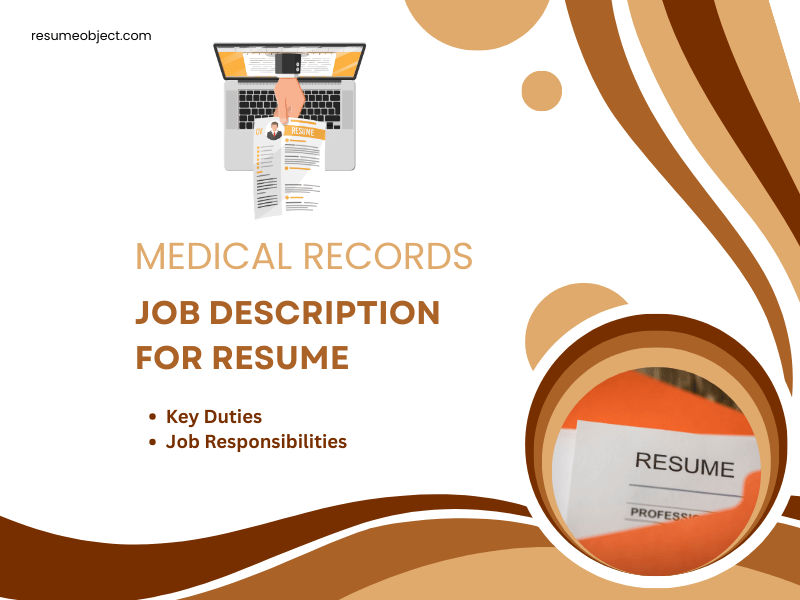
Medical Records Job Description for Resume
Discover the essential Medical Records Job Description for Resume, highlighting key duties and action verbs to enhance your application. Learn how to effectively showcase your skills and stand out to employers in the healthcare industry.
Key Duties
Maintain patient confidentiality and security
Organize and update medical records
Ensure accurate data entry and coding
Assist with medical record audits
Collaborate with healthcare professionals
Required Skills
Attention to Detail
Medical Terminology Knowledge
Data Entry Proficiency
Organizational Skills
Confidentiality Compliance
Mistakes to Avoid in Job Description
Using vague job titles
Omitting relevant certifications
Neglecting specific skills required
Tips for Job Description
Use specific medical terminology.
Highlight relevant technical skills.
Quantify achievements and responsibilities.
Free Resume Templates





